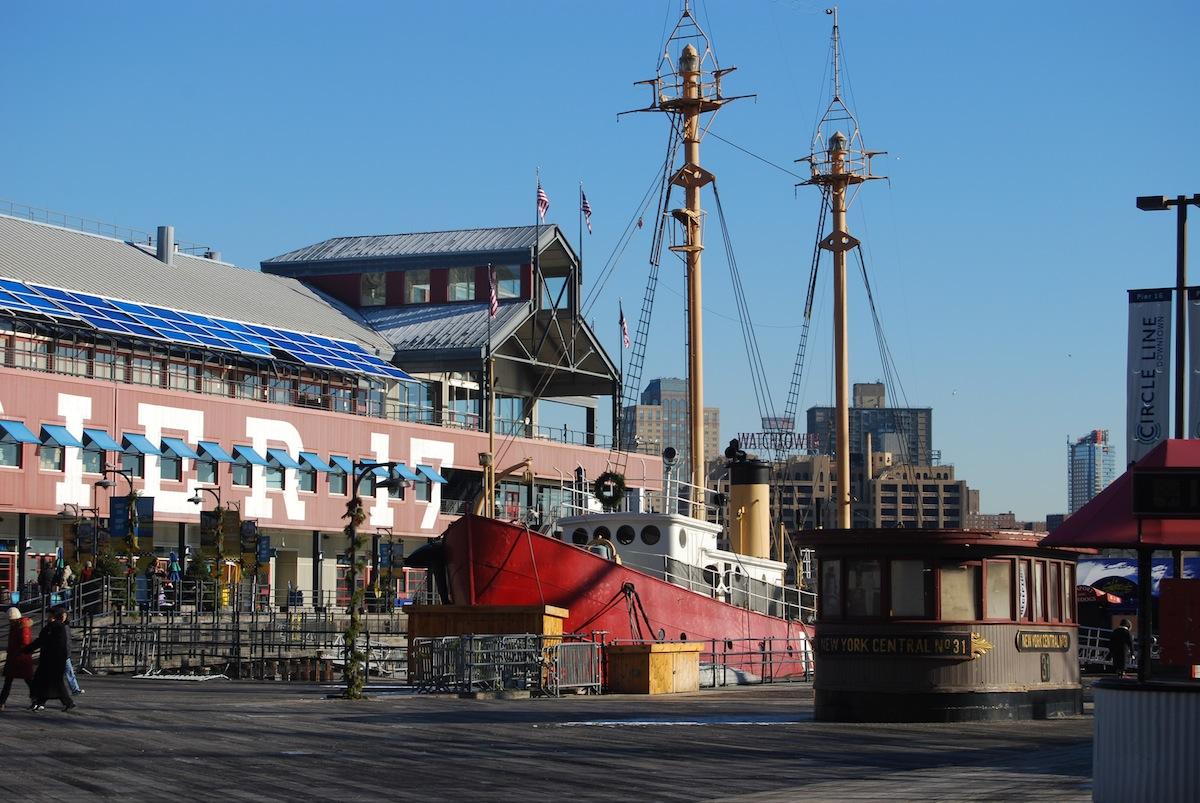Students Uncover Long History of South Street Seaport
May 31, 2011

Published: December 13, 2007
FCLC—The Honors Class of 2010 at Fordham College at Lincoln Center (FCLC) embarked on an original project this past semester. Under the direction of Roger Panetta, professor of history, the students created the first digital compilation that features the complete history of South Street Seaport, from its origins and its heyday, to its decline and restoration. The fruit of the class’ efforts is available for viewing online.
When Panetta first proposed his plans for the semester, his students responded with mixed feelings. None of the students had worked on a research project of such massive scale. “I thought it was interesting that the entire course was going to be devoted to one project,” says Brooke Burdge, FCLC ’10, who helped design the Web page, “…but it was such a time-expensive project that it did require a whole course, if not more time, to complete it.”
Panetta explained that his four thoughts going into this project were to challenge the class, let the class do original research, have a New York theme and to make the research public. “If the quality of work is good, then it must be presented. A lot of times, term papers are secrets between me and the students,” he said.
Lauren Evangelista, FCLC ’10, explains, “Most of the tourists were more interested in the commercial redevelopment. Some expressed that they wanted to learn about the history but did not think they could.” As the class came to realize through various interviews, most of these visitors have little knowledge of the South Street Seaport’s crucial role in molding New York City.
Visitors to the Web site can now develop a fuller appreciation of the historic area that dominated New York City in the nineteenth century. Jessica Mazzola, FCLC ’10, said, “The tourists we spoke to who were interested in the history felt that nothing was blatantly advertised where they could go to learn.” Using this Web site, not only can viewers learn about traditional topics, such as the Fulton Fish Market or the building of clipper ships, but they can also explore a wide range of uncommon history. For example, one can listen to sea chanteys that were popular two hundred years ago, or use the Sailor’s Glossary to brush up on maritime terminology. Because the class’ research has been compiled into an easily navigable website, the forgotten history of South Street Seaport is now accessible to all those who are eager to learn.
Individual students volunteered themselves to take on particular roles, such as Shane Skowron, FCLC ’10, who was involved with the task of creating the entire Web site. A large amount of work was required outside of the classroom, with students making weekly and biweekly trips to various libraries in New York City. This work culminated on Dec. 12, with a Web site launching party, organized by student Morgan Greene, FCLC ’10. Jack Putnam, a historian at the South Street Seaport Museum, and various students of the Honors Class of 2010, delivered brief speeches. A group of students also provided a mini-tour of the Web page.









